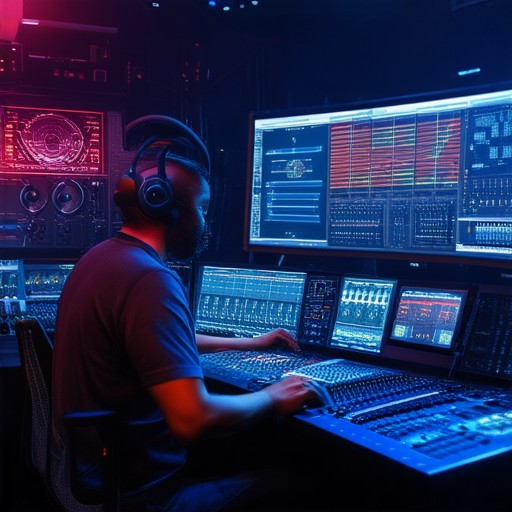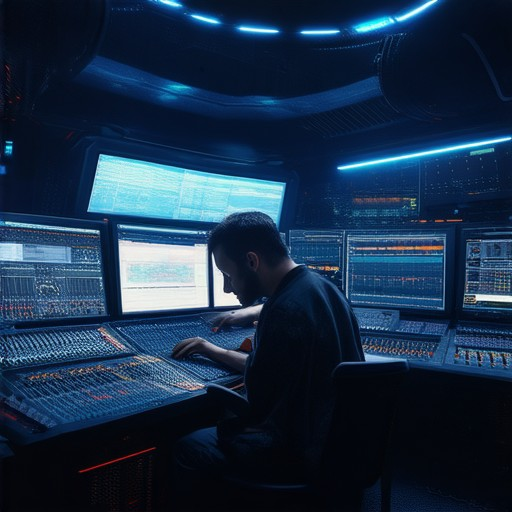Sound checks are a cornerstone of live performances, recording sessions, and professional events, yet many musicians and professionals still struggle with mastering the art of a proper sound check. Whether you’re a seasoned musician or new to the scene, getting your sound right is crucial for delivering a polished performance. In this ultimate guide, we’ll delve into essential tips, tools, and practices that will help you ace your sound checks every time. From understanding the basics to avoiding common pitfalls, this comprehensive guide covers everything you need to know to ensure your soundcheck sets the stage for success. Let’s explore the ins and outs of sound checks, including how to prepare, what to test, and how to avoid costly mistakes. Whether you’re preparing for a small gig or a large-scale event, these tips will help you maintain crystal-clear audio quality and keep your audience engaged. Sound checks may seem simple, but there’s more to it than meets the eye. Stay tuned as we uncover the secrets to a flawless sound check and elevate your performance to new heights!

How to Do a Good Sound Check
To ensure a successful sound check, follow these organized steps:
-
Vocal Check : Begin by ensuring the lead vocals are clear and intelligible. Adjust gain or mic positioning to eliminate feedback or distortion.
-
Drum and Bass Setup : Fine-tune the kick drum and snare to be prominent yet balanced within the mix. Ensure their mics capture the correct level without overwhelming other instruments.
-
Overall Mix Balance : Adjust each instrument’s volume and EQ to achieve a cohesive sound. Use effects or reverb strategically to enhance specific instruments without causing audio clutter.
-
Monitor Setup : Provide clear and reliable monitors for performers. Assign someone to oversee the soundboard, allowing adjustments as needed during the set.
-
Equipment Testing : Conduct a thorough check of all microphones, speakers, and other gear to prevent malfunctions during the performance.
-
Intercom Communication : Utilize headsets or in-ear monitors for effective communication between the band and sound team, enabling timely issue resolution.
-
Final Walk-through : Perform a final check just before the show to address any last-minute issues and ensure the setup is visually and technically sound.
-
Acoustic Environment Considerations : Assess the venue’s acoustics and use appropriate solutions to minimize echoes or reverberations.
-
Audience Preview : Test the sound with a small audience or select listeners to gauge real-world sound quality and make necessary adjustments.
By methodically addressing each aspect, you can ensure a polished and enjoyable performance experience.
What to Do During a Sound Check?
Sound checks are crucial for ensuring your equipment is set up correctly and your performance sounds as intended. Here’s a step-by-step guide to making the most of your sound check:
- Start with Instrument Setup: Begin by testing each piece of gear individually. This includes checking amplifiers, speakers, microphones, and any effects units. Adjust the settings to match your preferred tone.
- Check Drum Kit First: The drummer often serves as the backbone of the sound, so it’s essential to ensure the drum kit sounds tight and consistent. Adjust the snare drum, tom-toms, and cymbals as needed.
- Fine-Tune the Bass: After drums, focus on the bass. Make sure the low-end frequencies are present and punchy. Experiment with EQ settings to achieve the desired tone.
- Adjust Guitar or Keyboard Settings: If you’re using a guitar or keyboard, fine-tune the effects and pedals to match your playing style. Ensure the sound is clean and free from feedback issues.
- Test Vocals (If Applicable): If you’re performing vocals, check the mic placement, volume level, and reverb settings. Make sure your voice cuts through the mix without being too quiet or too loud.
- Monitor the Overall Mix: Once all instruments are tested, stand back and listen to the mix as it would be heard by an audience. Adjust any levels or effects as needed to ensure everything sounds balanced.
- Note Common Issues: Be aware of potential problems like feedback, audio dropouts, or uneven volume. Address these issues before the show starts to prevent interruptions.
- Finalize the Monitor System: Ensure your monitors are set up correctly so you can hear yourself and the rest of the band accurately. Adjust the monitor levels to avoid feedback or overwhelming sound.
By following these steps, you’ll ensure your soundcheck is thorough and helps you deliver a polished performance. Remember to always test your equipment beforehand and communicate with your team to make adjustments as needed.

What to Say During a Sound Check
To ensure everything sounds perfect before your performance, here’s a structured approach to conducting an effective sound check:
-
Microphone Check : Start by verifying your microphone. Ask, “Can everyone hear me clearly?” This ensures your voice is audible to the entire audience.
-
Main Speaker Check : Next, check the main speakers. Inquire, “How about the speakers? Are they sounding good?” This helps confirm that the sound distribution is adequate.
-
Vocal Level Check : Assess the balance between your vocals and the rest of the band. Ask, “How does my vocal level compare to the rest of the band?” This adjustment ensures your voice isn’t too loud or too soft.
-
Effects Loop Check : Finally, verify any effects or processing units. Ask, “Is my effects loop functioning correctly?” This step ensures that any additional equipment is operating smoothly.
By systematically checking each component, you can identify and resolve any issues before your performance begins, ensuring a seamless experience for both you and the audience.

Sound Check Rules for Oedipus Band
The sound check process is crucial for ensuring optimal audio quality during performances. Here are the essential rules for sound checks at Oedipus Band events:
- Arrival Time: Report to the venue at least two hours prior to the performance start time to allow setup and sound check.
- Equipment Setup: Confirm all equipment, including speakers, amps, and effects, are present and functional. Address any issues immediately with venue staff.
- Volume Levels: Set stage volume levels to prevent feedback and ensure clarity. Adjust settings based on the venue’s acoustics and audience size.
- Equalization (EQ): Fine-tune guitar and bass tones to blend seamlessly with the drums and vocals. Use a high-pass filter on bass to avoid muddiness.
- Monitor Mix: Ensure each musician’s monitor level is accurate, balancing front-of-house and stage monitoring for optimal performance.
- Signal Flow: Establish a signal flow diagram to organize cables and connections efficiently, reducing the risk of tangled wires and equipment failure.
- Stage Lighting: Coordinate lighting cues with the technician to enhance the visual appeal without overpowering the audio.
- Final Checks: Conduct a full sound check run-through, including all songs and special effects, to ensure everything performs smoothly during the show.
By following these guidelines, we ensure that every performance delivers an exceptional auditory experience for our audience. Our commitment to sound quality reflects our dedication to providing an unforgettable live performance.
What to Play During Sound Check?
During sound check, it’s essential to evaluate your setup and ensure everything runs smoothly before the show. Here’s a guide to help you make the most of your sound check:
Key Points to Keep in Mind
- Test Volume Levels:** Play your loudest and quietest sections to ensure the sound engineer can balance the levels effectively.
- Check for Feedback:** Identify any feedback issues early on to prevent problems during the actual performance.
- Evaluate Monitor Levels:** Make sure your monitors are properly adjusted to avoid hearing issues during the show.
- Practice Setlist Order:** Confirm the order of your setlist to ensure smooth transitions between songs.
Examples of What to Play
- Loudest Section: A high-energy song like “Rockstar” by Linkin Park or “Smells Like Teen Spirit” by Nirvana.
- Quietest Section: A ballad like “Blackbird” by The Beatles or “Every Breath You Take” by The Police.
- Mid-Tempo Transition: A song that represents a change in energy, such as “Sweet Child O’ Mine” by Guns N’ Roses or “Hotel California” by Eagles.
Additional Tips
- Communicate with the Sound Team:** Clearly explain any specific needs or issues you anticipate.
- Play a Few More Songs if Needed:** Sometimes, additional tracks are played to fine-tune specific instruments or vocals.
- Be Prepared for Adjustments:** Expect to make small adjustments once you hear how everything sounds together.
Conclusion
A well-prepared sound check ensures your performance will be polished and free of technical issues. By focusing on key sections and communicating effectively with your team, you can achieve the optimal sound for your audience. Remember, the goal is to make your audience feel the energy and emotion of your music, so take the time to dial everything in during sound check.
Learn more about sound check preparation .

Osha Requirements for Noise Monitoring
The Occupational Safety and Health Administration (OSHA) has established specific requirements for noise monitoring in the workplace to ensure employee safety. These regulations are designed to minimize the risk of hearing loss caused by excessive noise exposure.
Permissible Exposure Limits
<p.OSHA sets the maximum allowable noise exposure level at 85 decibels (dB) averaged over an 8-hour workday. If noise levels exceed this threshold, employers are required to implement effective noise monitoring and control measures to protect their employees.
Monitoring Requirements
Employers must conduct noise monitoring if there is any indication that employees may be exposed to levels of noise equal to or exceeding the 8-hour time-weighted average of 85 dB. This includes but is not limited to environments where machinery, tools, or processes generate loud noises.
Action Steps if Exposures Are Detected
- Assessment and Evaluation: Identify the source(s) of noise and evaluate the extent of exposure through systematic noise monitoring.
- Implementation of Controls: Develop and enforce engineering controls, administrative controls, and/or personal protective equipment (PPE) to reduce noise levels to below the permissible limit.
- Employee Notification: Inform affected employees about the potential risks and the steps taken to mitigate noise exposure.
- Documentation: Maintain records of noise monitoring results and the corrective actions implemented to ensure compliance with OSHA standards.
Additional Considerations
Employers should also consider the following:
- Industry-Specific Standards: Some industries may have stricter noise exposure limits due to the nature of their work (e.g., construction, manufacturing).
- Hearing Protection: Provide hearing protection devices if necessary to further reduce noise exposure.
- Training Programs: Conduct regular training sessions to educate employees on the dangers of noise exposure and the proper use of PPE.
Compliance and Documentation
OSHA requires employers to maintain accurate records of noise monitoring results and to follow the outlined procedures for evaluating and controlling noise exposure. Proper documentation helps demonstrate compliance with federal safety standards and ensures ongoing worker protection.
Conclusion
By adhering to OSHA’s noise monitoring requirements, employers can significantly reduce the risk of hearing loss and create a safer working environment for their employees. Regular assessment, implementation of controls, and thorough documentation are essential components of effective noise management in the workplace.



0 Comments